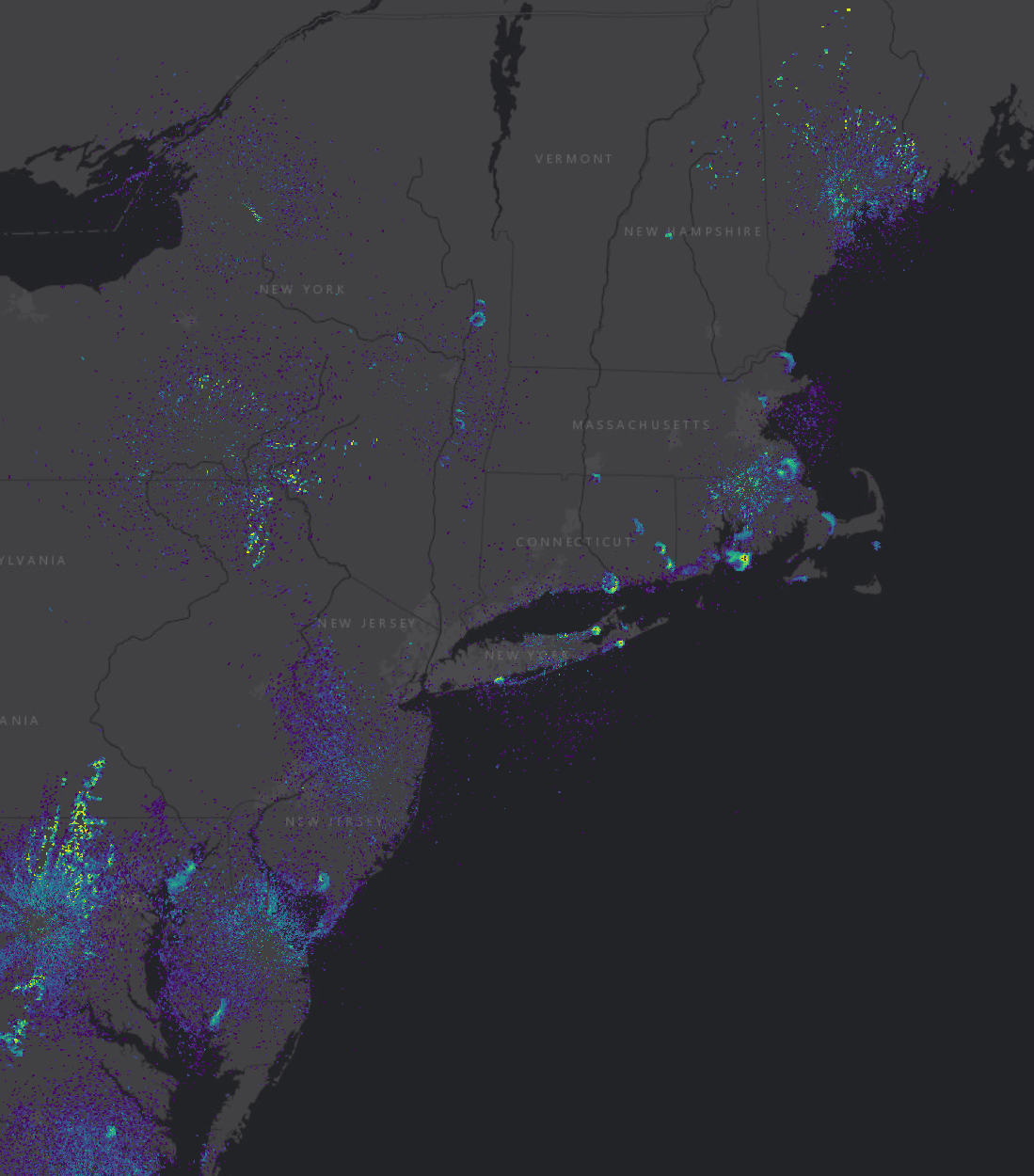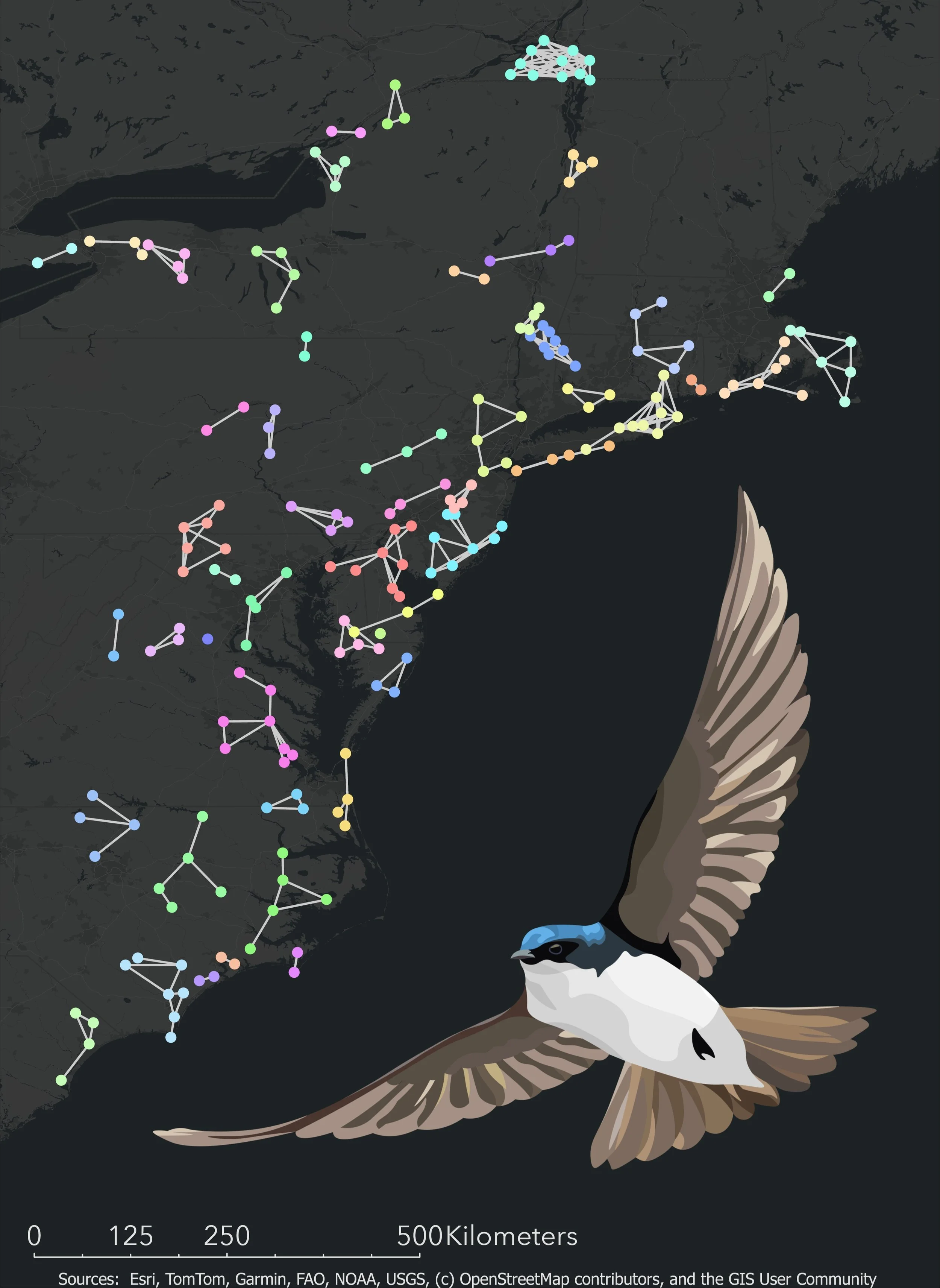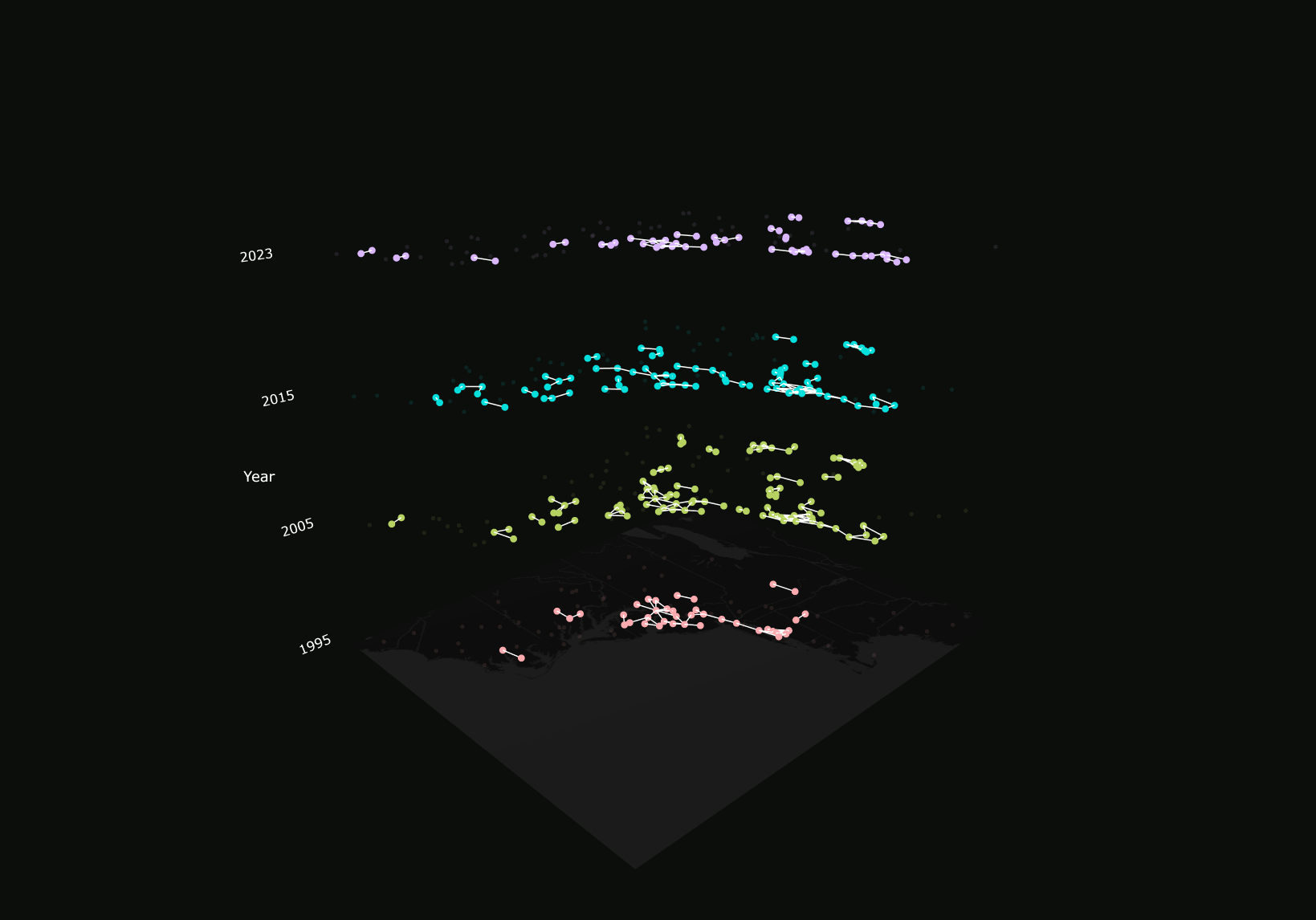Aerial Insectivore Roosts
“Fall is a season of drama in the tree swallows' yearly cycle. A single idea, or an urge, seems to grip every swallow in the land. The nesting season with its quarrels over, the swallows draw together with a common interest in preparation for their next step, the long migration they will take in companies of hundreds or thousands. In August and September we see them gathering in the great marshes by the sea, where they linger for many days in ever-increasing numbers, young and old…”
- Arthur Cleveland Bent
Every autumn morning in North America, millions of Purple Martin and Tree Swallows emerge from their roosts in wetlands, forests, bridges, and even urban centers. These emergence’s contain so many birds that they appear on weather radar as “roost rings”, originally dubbed “angels” by the first radar technicians. Not only are these roosts fascinating to watch (both on radar imagery and in-person), but they are critical stopover locations for entire populations of these declining species, and can be studied on a large scale, thanks to weather radar data.
I grew up in Old Lyme, Connecticut, home to one of the biggest and oldest known Tree Swallow roosts, which settles in a small Phragmites island on the Connecticut River. During my undergraduate years, I would often swim out to the middle of the river and watch as the swarms of swallows would dance around me, grabbing sips of water before forming into an immense cloud that funnels into the island like a tornado touching down. Ever since, I’ve dedicated myself to better understanding how these roosts form, and how we can better protect them.
Roost Networks
“When a living system is suffering from ill health, the remedy is found by connecting with more of itself.”
- Francisco Varela
I always pictured these roosts blooming from the landscape each morning, and wondered if birds ever used multiple roosts each season. When I found out that they do switch roosts somewhat regularly, I saw the roosts as this network of interconnected stopover sites that was growing, evolving, changing from year to year.
Using network analysis, machine learning, and citizen science data, I constructed this network using radar data to map roost sizes and locations, and created connections between them based on their proximity and daily co-occurrence. Because I wanted to see how the network of roosts changed from year to year, I essentially connected annual networks together, making something called a “multiplex network”, as shown below.
A 3-D plot of the Eastern migratory Tree Swallow roost network
This multiplex network had lots to say about how this roost network has changed over time, but most importantly, it showed that it has been fragmenting and contracting in response to an overall decline in roosting birds. The project is currently being reviewed, so updates await!


